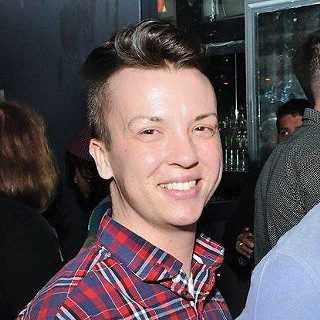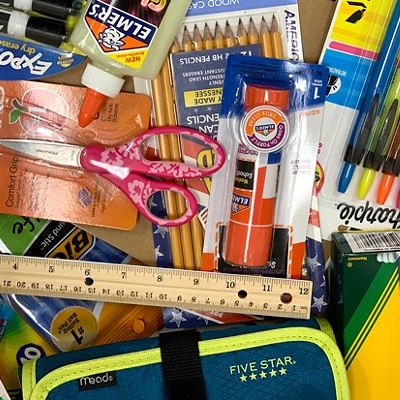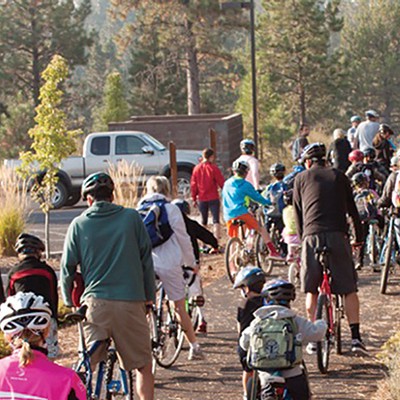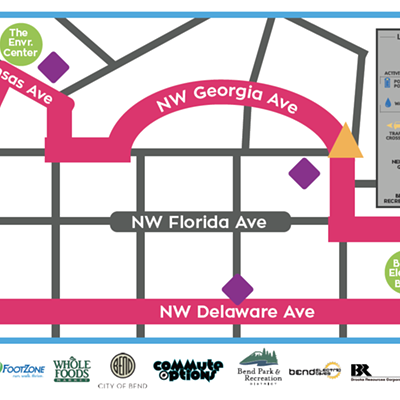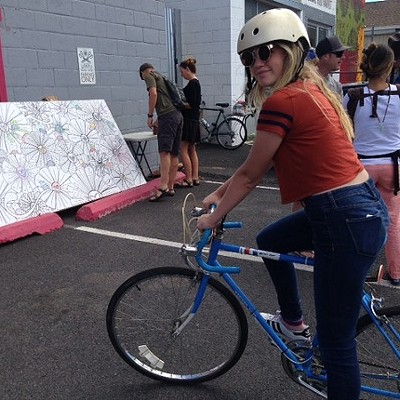on a recent Friday, Jim Slothower was riding his bike from Bend to Redmond for a family dinner. The experienced cyclist says he was making good time, about 25 miles-per-hour along Obsidian Road, when an approaching car turned left directly in front of him.
"I swerved to right to avoid head-on [collision] but went down hard," recalls Slothower, a 69-year-old retired attorney who has ridden road bikes in Central Oregon for nearly 40 years, putting in an average of 3,000 miles each year.
The crash cost him four broken ribs, a punctured lung, cuts and bruises, $2,150 in bike repairs, and damage to a host of other accessories. He says he spent two days in the hospital with a leaky lung. But it's not the first time something like this has happened to the avid cyclist. It's the third time he's broken ribs in a bike crash. Slothower counts himself lucky he didn't get a concussion this time.
Unfortunately, Slothower's story is not unique. While serious bicycle accidents are not as common in Bend as they are in Portland, local road cyclists and bike commuters say they don't always feel safe on the road.
Casey Corcoran, owner of Blackjack Bioregional Infoshop, says he and his friends have been pelted by rocks, glass bottles, and eggs while riding bikes. Another reader says she knows people who rig their trucks to spew thick, black smoke when they pass cyclists. When we asked readers about their experiences, many chimed in with stories of near misses, accidents, and outright harassment. Even City Councilor Nathan Boddie has had his share of run-ins.
"I have been struck by a car three times over the years, once in Bend," says Boddie, who sometimes commutes by bike from his westside home to his job at the hospital. "Thankfully, only some bruises and road rash resulted."
What makes biking in Bend such a risky proposition? It depends who you ask. Anytime the topic of bicycle safety comes up, it quickly becomes a battle of blame between drivers and cyclists.
"How about stopping at stop lights and signs? That tends to help the whole safety thing," recommends Ellie Sullivan Cuff. "And just maybe wear a helmet."
Meanwhile, cyclist Katrina Dunmire takes motorists to task for not paying enough attention.
"I've been nicked numerous times by people pulling out of businesses, on cell phones, trying to control their dog in the car, etc.," Dunmire writes. "Someone in the school zone on Bear Creek just about hit me while trying to pass the school bus. I've learned to start kicking out headlights or kicking a good dent in vehicles."
But neither side has a monopoly on responsibility. And many people who both ride and drive point out that both drivers and cyclists sometimes break the rules or fail to pay close attention, with potentially dangerous effects.
Even so, it stands to reason that drivers who don't have much experience riding bikes on the road might lack a certain perspective.
"Most motorists who don't ride bikes are completely ignorant of the danger posed to bike riders by vehicles that are driven too close to bikes, of drivers who honk when they go by, don't signal turns, etc.," says Slothower.
Of course, that's why there are traffic laws. The only problem, not everyone knows the law as it pertains to cycling and sharing the road, and not all those who do, follow it. Most people get their drivers' license as a teenager and never again revisit the rules of the road. And for cyclists who don't drive, there is no test. (For a refresher, see Side Notes.)
Not surprisingly, the most common causes of collisions are a result of not following relevant traffic laws. According to Brian Potwin, education coordinator for Commute Options, common missteps by cyclists include riding on the wrong side of the road (toward traffic), failure to obey traffic control devices, and not having proper lighting or reflective devices. For cars, the common culprits include not yielding the right of way and turning in front of a cyclist who is going straight through an intersection.
"It's about 50/50. Half the time it's people riding bicycles at fault, half the time it's people driving," Potwin says. "No matter what mode of transportation you use, conflicts are going to happen... Knowing the rules of the road and following the rules of the road increase positive interactions."
Many cyclists and motorists also advocate for increased enforcement of existing traffic laws, including ticketing people who talk on their phones while driving and drivers or cyclists who fail to signal.
Peter A. Werner, a local attorney who commutes by bike "95 percent of the time," and often in a suit and tie, says that increased law enforcement offers one of the greatest opportunities for change.
"Why would people obey the speed limit [as drivers], or obey stop lights and stop signs as cyclists if there are no consequences?" Werner asks.
But beyond basic rule following, many bike riders say that infrastructure changes are also needed to reduce conflicts between cars and bicycles and advocate for more physical separation between cars and bikes.
In the meantime, Werner suggests that drivers and cyclists alike work on being more aware of who and what's around them.
"Most people don't understand how to navigate the roads vis-a-vie each other," he says. "I think there's a breakdown when you put a windshield between you and someone else."


